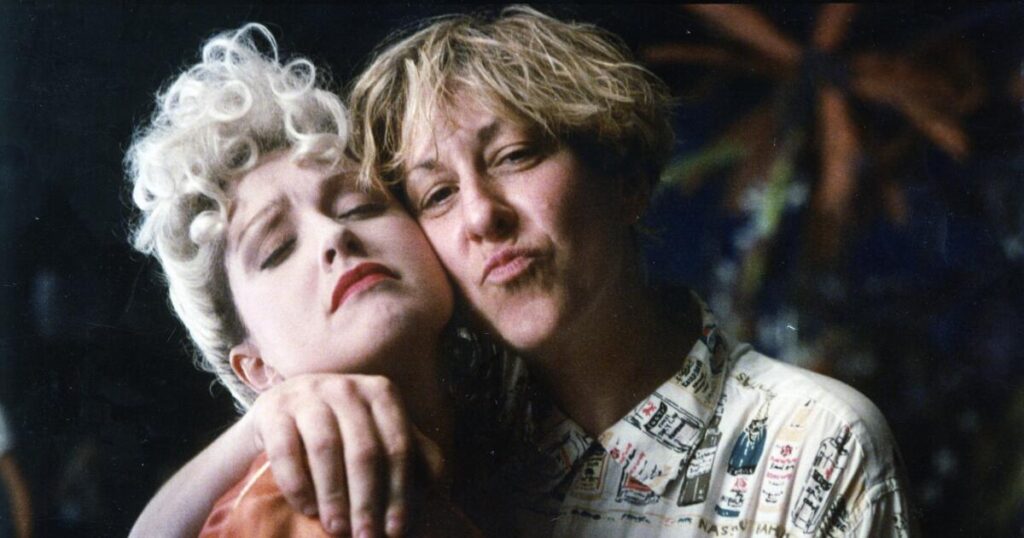[ad_1]
At her height, all the record labels wanted songwriter Allee Willis. But labels in general were never her thing. She was a prolific, pioneering music legend, artist and designer who turned her candy-colored life into an ongoing act of next-thing expression while generations of listeners made her hits — including Earth Wind & Fire’s “September” and the “Friends” theme “I’ll Be There for You” — the endlessly repeatable soundtracks of our lives. (Willis has sold an estimated 60 million records.)
She’s now the subject of a lively documentary from Alexis Manya Spraic, “The World According to Allee Willis,” and in a central way, it qualifies as the Detroit-born artist’s final work as well. Willis died in 2019 at the age of 72, one year after entering the Songwriters Hall of Fame, but she left behind enough self-consciously autobiographical material — videos, writings, photos, tapes, files, ephemera, art, a taffy-pink house of kitsch and cool in the Valley to hold it all, plus countless friends with stories — to give this portrait the aura of a collaboration from the beyond.
In person, she felt like a force, her kaleidoscopic wardrobe hardly a match for her natural energy. Full disclosure: She was an occasional fixture at dinners thrown by my late friend Paul Reubens, an interviewee in the film who was apparently Spraic’s connection to the project. I’ll never forget the time one of those dinners segued to the Koreatown karaoke bar Brass Monkey, where later on, the owner felt the need to introduce a certain performance: “Um, this is a first for us, ladies and gentlemen — someone singing something they actually wrote. Allee Willis and ‘Boogie Wonderland!’”
Needless to say, that made the night feel epic, more so in retrospect having learned from the film that she’d felt burned by her failed mid-’70s bid to become a recording artist, even though it launched her stratospheric rise as a cross-genre songwriter, rock doctor and all-around creative buzzsaw. But growing up with a withholding, traditionalist father who disdained her nonconforming style and fondness for Black music — the lawn outside Motown Records was a regular hangout of her youth — led to unresolved feelings about her sexuality, plus an enduring belief that success was never enough. And when glass ceilings for women in music were hit, you could understand her thirst to make every idea and new discipline count, and the penchant for excess that went with it.
Spraic treats Willis’s externally fabulous, internally tumultuous life as her ultimate solo album: The good times (creating songs, breaking barriers, that crazy house) are the hooky, uptempo earworms, while the self-doubt and unrealized dreams are the plaintive power ballads. Then there’s the guest star lineup, friends and collaborators offering affectionate and honest testimonials like a sturdy backbeat: Cyndi Lauper, Patti LaBelle, Bruce Vilanch, Mark Mothersbaugh, Brenda Russell, Ruth Pointer and Lily Tomlin, to name just a glittery handful.
This is the rare entertainment doc, in fact, that isn’t leadened by its many interviewees, probably because they reflect the constellation Willis built as an unstoppable artist and ride-or-die colleague. Helping fill out the picture emotionally is her partner of over 25 years, Prudence Fenton, an esteemed creator in her own right (and executive producer), whose honesty about the ups and downs of being with someone wholly committed and ever-inventive, but never fully out and always a work in progress, is touching.
The world is full of ego-massaging celebrity documentaries, in which legends we know star in glorified tribute reels. But the zesty, illuminating “The World According to Allee Willis” feels like what the showbiz biodoc was meant for, to give voice to someone who was so much more than a ubiquitous album-sleeve credit.
[ad_2]
Source link

